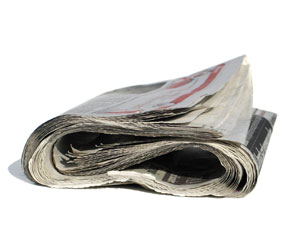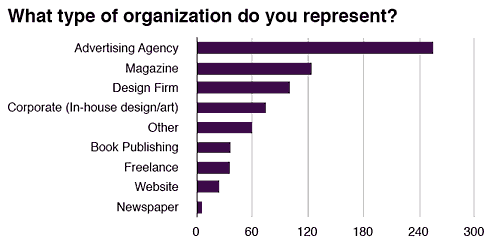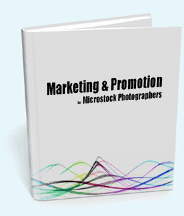 What are editorial Images?
What are editorial Images?
Editorial images include photos of newsworthy events, images of places that feature trademarks, images of commercial products, rights protected buildings taken from a public place, images of celebrities or people in the news.
Examples would be:
- Someone drinking a can of Coke or using a clearly identifiable product such as an iPhone
- Someone eating a hamburger outside a well known restaurant with visible signage
- An office building in a city with a corporate logo on it
- A street scene at a festival with lots of people in it
- Celebrity images you took at a sporting event or concert where photography was permitted
Such images would not be accepted by an agency for use as royalty-free stock due to the inclusion of logos or people without releases.
A photo that you take of people in a studio without obtaining a model release would not likely be accepted as an "Editorial Photo". To be considered an editorial photograph, the person(s) would need to be a celebrity, or the photograph would need to depict a newsworthy story or location, preferably a current one or perhaps a well known and recognisable product being used.
Agencies have different policies regarding what is acceptable, you'll come across the following terms used to describe editorial:
- Newsworthy (aka Documentary) - Recent news events taking place, riots, demonstrations, natural disasters etc.
- Celebrity - These also tend to depict a specific event, movie premier etc but as the name suggests contain recognisable people in society. iStock in particular don't accept celebrity images into editorial, they have a separate business unit within Getty.
- Illustrative - These are generic editorial images that contain trademarks or recognisable property but no specific time-frame. For example the signage on the front of a chain restaurant, mobile phone with logo, corporate headquarters with signage in the foreground. These images are often used by news organisations to depict news where there is no 'physical activity' taking place e.g. stock market flotations, takeovers, company politics etc.
Requirements
Images sold as editorial require a different style of description to royalty free images, particularly a detailed description of the time and place the image was taken. As the primary market for such images is newspapers and magazines such publications need to be able to find and also be confident that the image they are buying is of the correct place and taken at a relevant time. Don't be worried if your image was taken some time ago, while these images might be less relevant for a current story they may be a specific requirement of a story about something that occurred 20 years ago covering changing styles in dress, transport and interior decor etc.
bigstock require the following are included in the image description:
- A clear DESCRIPTION of the image (Who is it and What's happening)
- The DATE the photo was taken
- The PLACE the photo was taken
Some other agencies allow some or all of these details to be added as separate fields when uploading, this aid searching, especially the date fields. Without further specification from an agency I recommend formatting the date as 10 SEPTEMBER 2014 and not something like 10/09/14 which can cause problems with the special characters (slashes) and confusion with different date formats around the world (dd/mm/yy vs mm/dd/yy). The specific date is not absolutely necessary, you can use "JUNE 2014" if you don't know the exact date, even "CIRCA 1987" may be acceptable for older images. Depending on your workflow the date and time may also be included by the camera in the EXIF information, and can be manually added into the IPTC field "Date Created'.
> It's common practice to specify the location and date first, in uppercase, followed by the description in the usual sentence case.
 istockphoto recommend that images of city skylines only be uploaded if they are not more than 3 years old, although many editorial subjects and locations are relatively evergreen (or offer an historic record) there are several subject areas, particularly urban travel locations where images will have a shorter shelf life.
istockphoto recommend that images of city skylines only be uploaded if they are not more than 3 years old, although many editorial subjects and locations are relatively evergreen (or offer an historic record) there are several subject areas, particularly urban travel locations where images will have a shorter shelf life.
Likely Sales
Before their demise luckyoliver offered more money per sale of editorial images, but most of the current agencies are selling editorial licenses at the same price as their standard royalty free stock. It is also to be noted that the editorial market for a large part is time critical and most microstock sites take several days or a week to review new images.
According to the photoshelter 2008 buyers survey (caveat that photoshelters' buyers might not be typical microstock buyers) reveals that the possible market for editorial images is a lot less than half of that of other image uses, and that excludes that fact that people working for a magazine or newspaper are not always looking to find editorial images for their publication. Below is a table of respondents (not target market) plotted against image sale:-
There are a lot of places where editorial style photography is popular, the blogosphere for one, but try using istockphoto to find a picture of a high street bank complete with corporate livery to illustrate the current financial situation, you won't; sure you can find financial charts of money, even a generic 'bank', but for a topical news article a real bank is a lot more relevant.
Is microstock entering somewhat uncharted territory here? A place which was previously filled by companies like AP who provided the press with a source of news images. While microstock opened the door for backyard designers to obtain images, I believe it may also change the way that the small time commentator, blogger or your local 'cheap-sheet' obtain their visuals. Editorial microstock is particularly relevant for online media where there is the possibility to electronically source direct from the microstock site, or even create a license model based on cost per image view.
Should I upload?
I've always been skeptical of microstock for editorial. Editorial images are either ephemeral or form an historic archive which may produce only a few sales over their entire life (which might be as long as your lifetime), as such editorial photos are somewhat incompatible with "high-volume low-price" which is the microstock maxim.
Although other agencies have been accepting editorial images for some time, in 2010 istockphoto announced they would be accepting editorial images. The istock editorial collection contains no celebrity or news shots, purely photos what would otherwise be rejected for containing protected intellectual property. e.g. woman carrying an ipod, a photo of the empire state building, skylines featuring corporate logos. These iconic subjects have the potential to become (reasonably) high sellers, making this style of editorial, perhaps, cost effective to exclusive photographers.
Clearly celebrity, sports and music industry images are very popular, if you already have access to such images then editorial microstock might well be worth some investigation even if it never provides a primary source of income. As ever any comments on this are more than welcome!
Click here for a list of microstock agencies which currently accept editorial images and other niche Image types




Always interesting to read
David Fowler (not verified) on Wed, 2012-08-01 11:23Authentic and Opportunistic
Steve Gibson on Thu, 2012-08-02 03:39Thanks for those thoughts. Fair point about low costs - and yes I'm a firm believer in opportunity (and 'creating' those opportunities) be that in finding locations or seeing props rather than spending time/money hunting for them. Reminds me of what we heard from Cathy Yeulet / Monkey Business at Microstock Expo - she was taking about shooting stock in her back garden (nice garden!) and using businesses of friends and their premises as authentic locations. I used to think I was being a little amateurish doing that kind of think, but it seems that might not be the case if you go about it professionally the results to look professional.
They are by their nature 'authentic' - I'm sure the audience at your festival look far better than those staged shots that cost a fortune to setup. Even if editorial limits their uses if they are selling to that level then it seems there is some mileage there...
The microstocks have
Richard Thornton (not verified) on Thu, 2013-05-09 16:32